Four charges in a square Four charges of
























































































































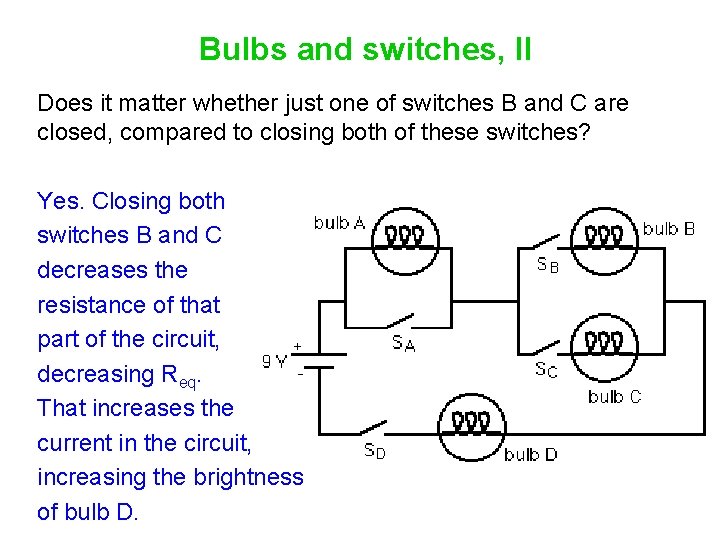
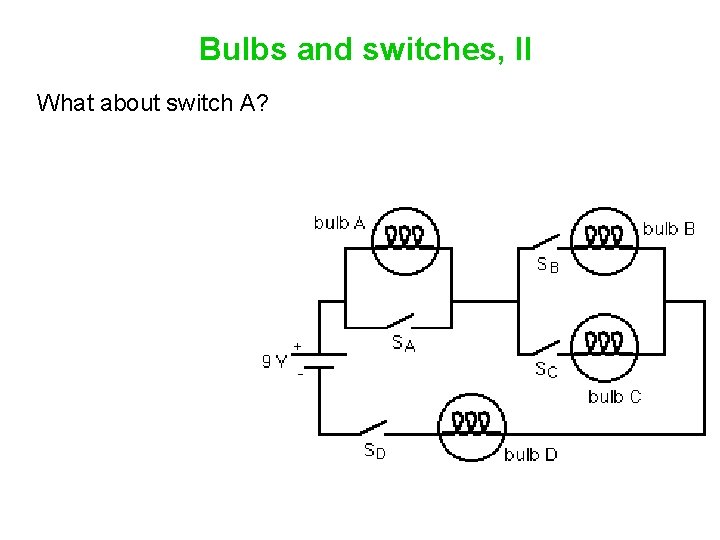
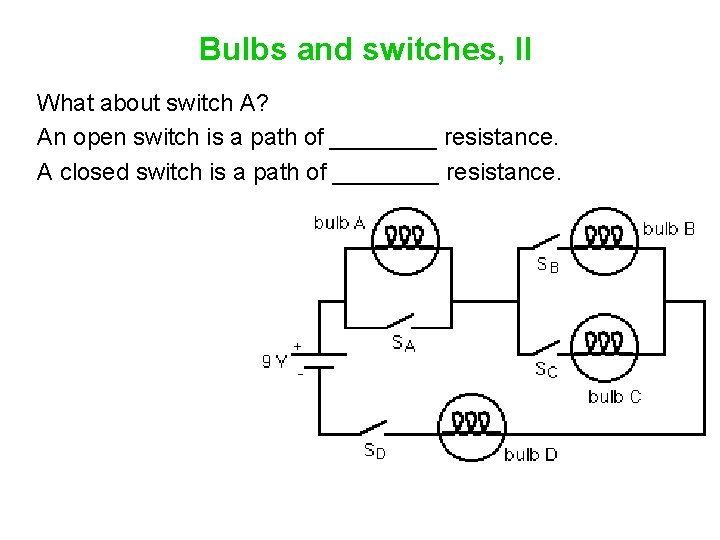
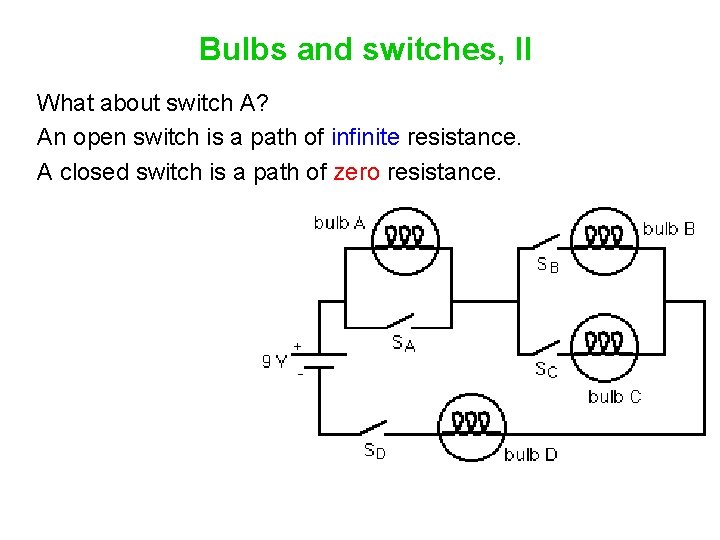
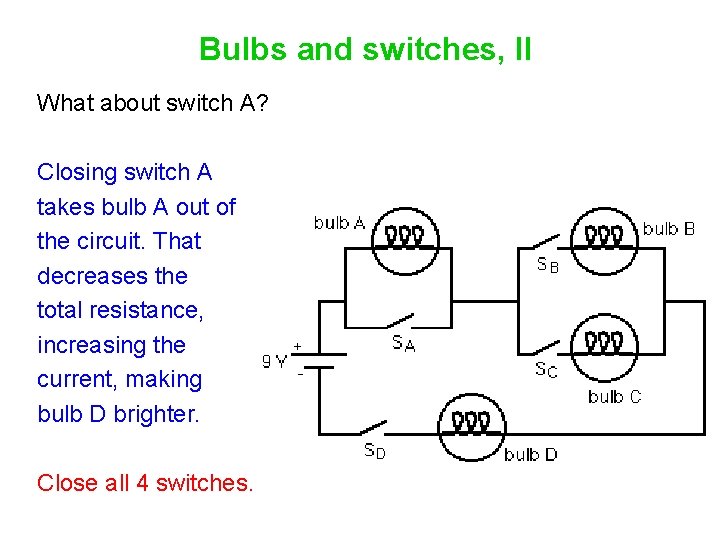
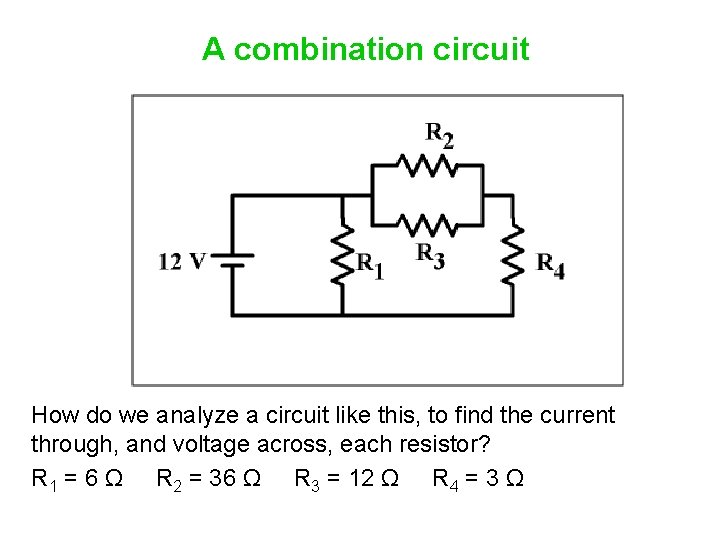
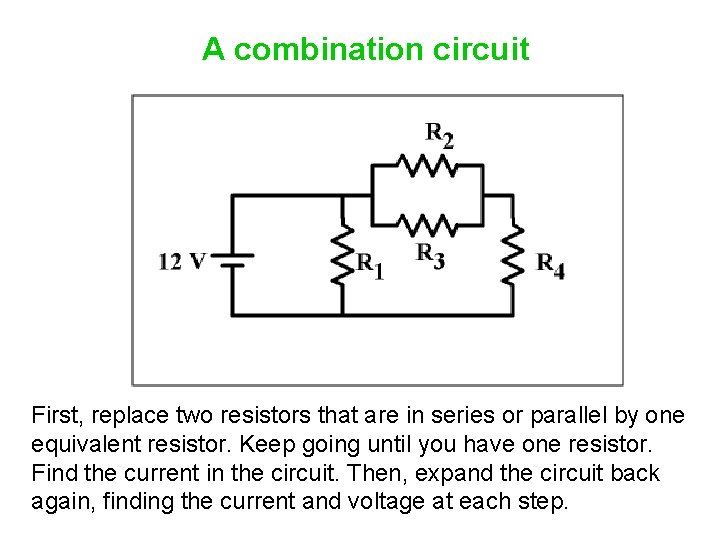
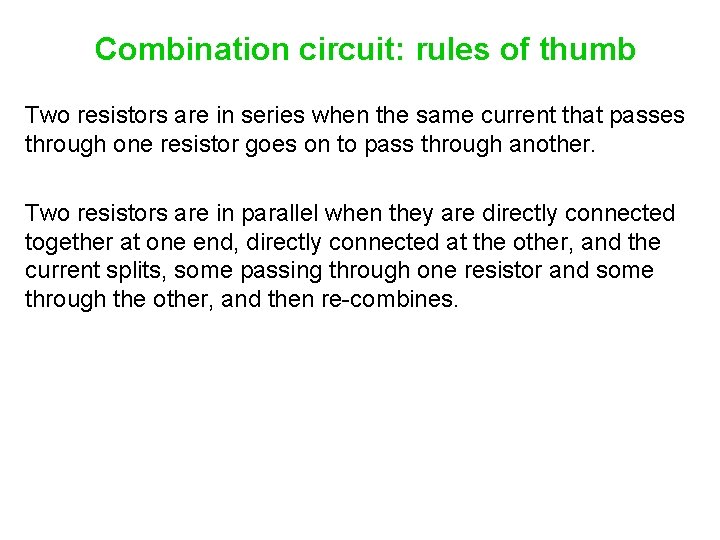
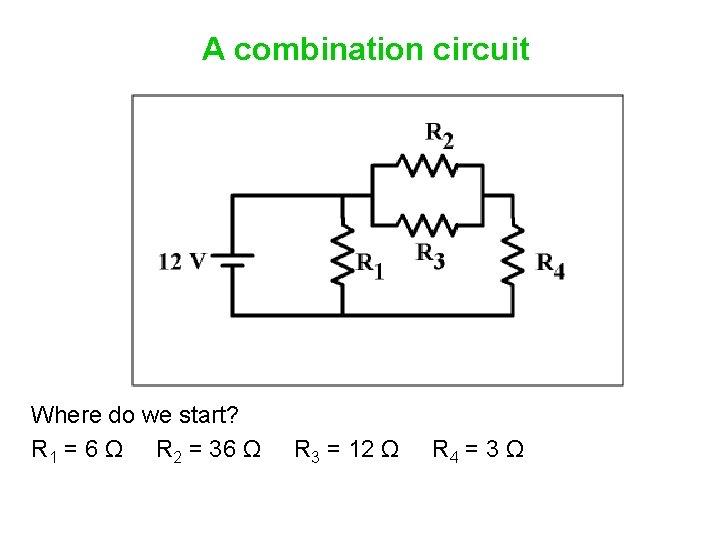
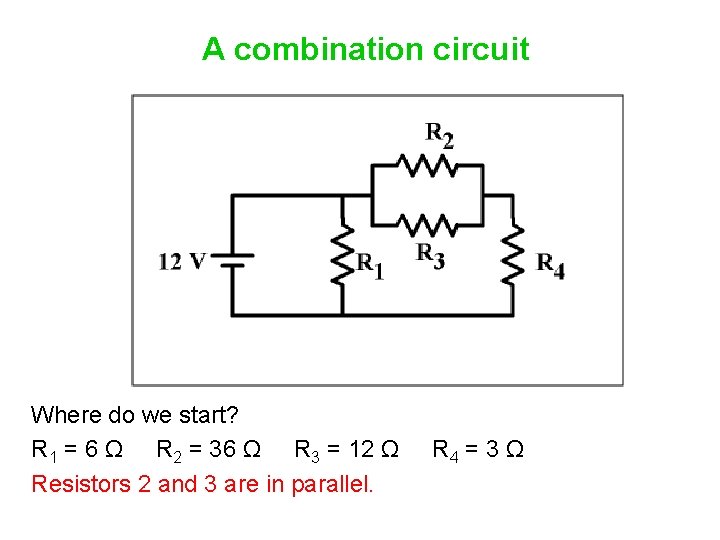
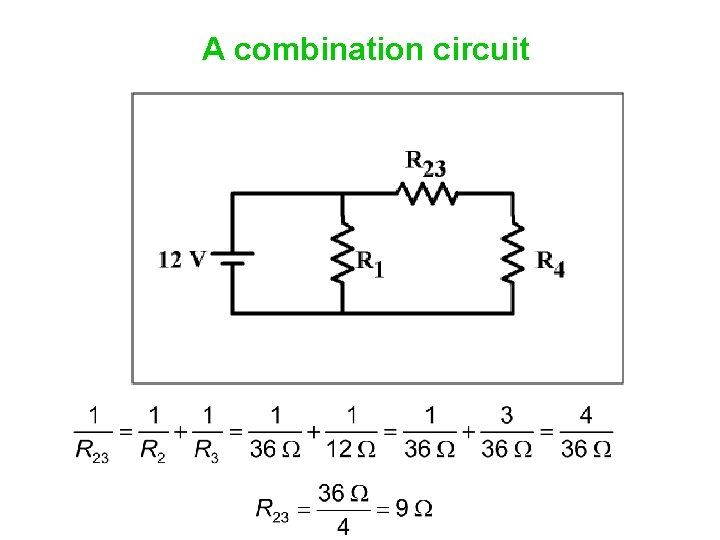

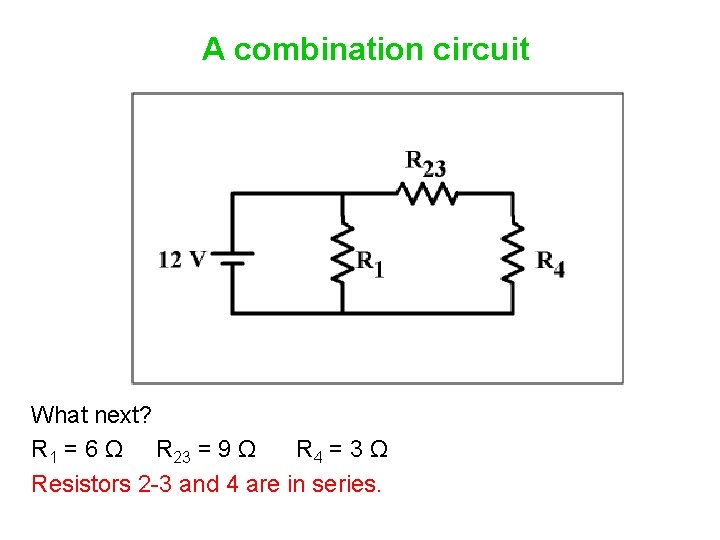
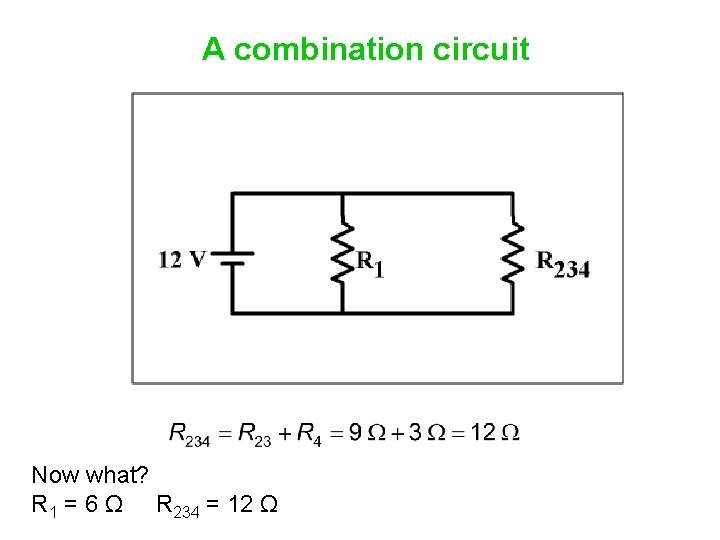
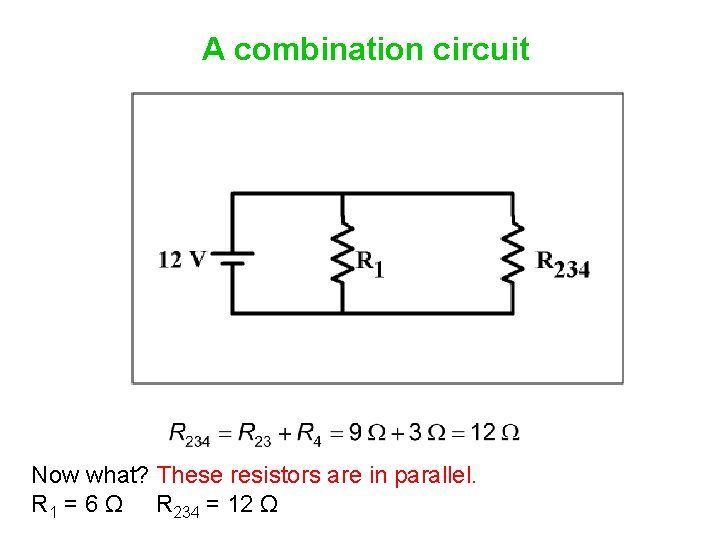
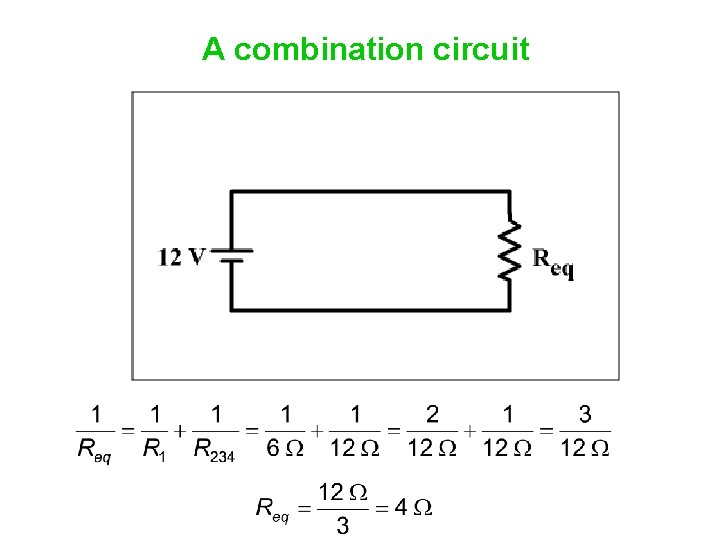
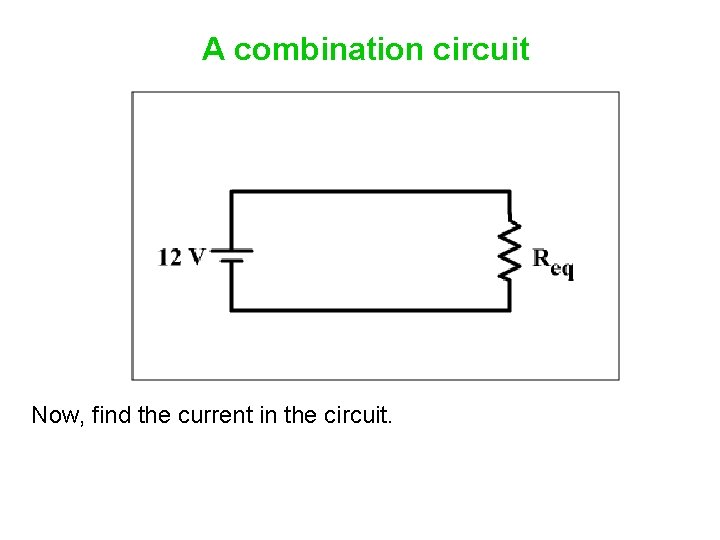
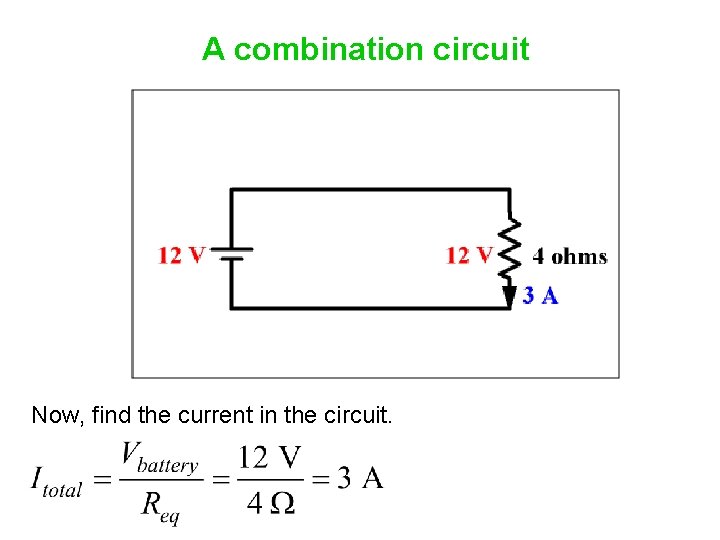
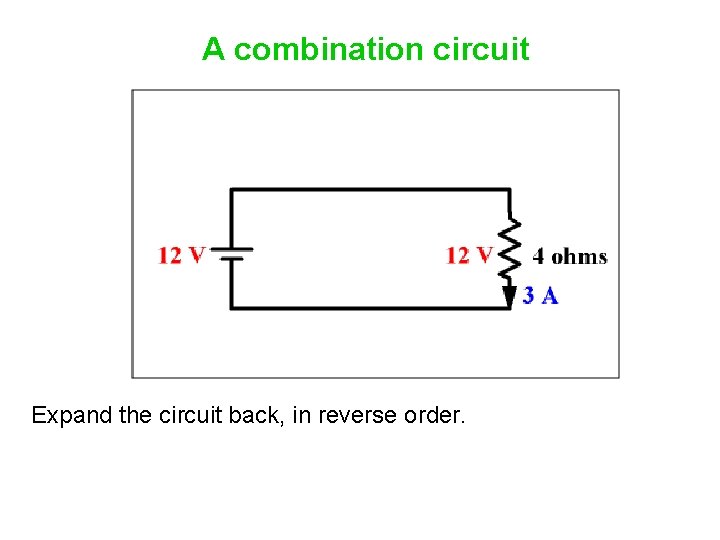
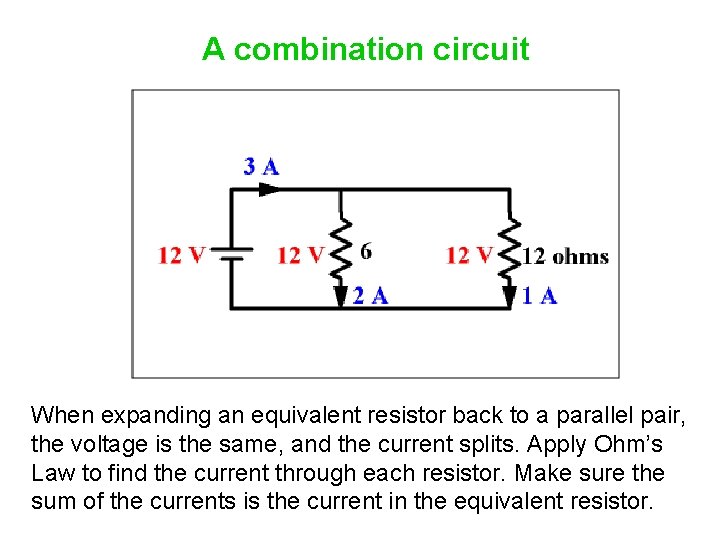
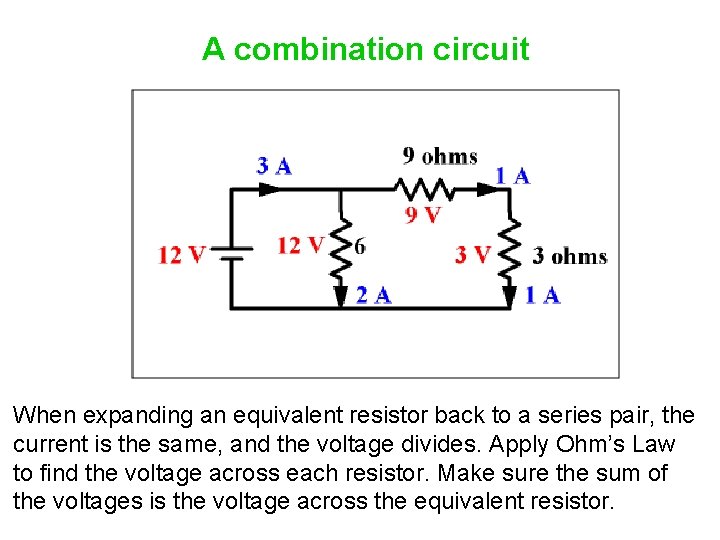
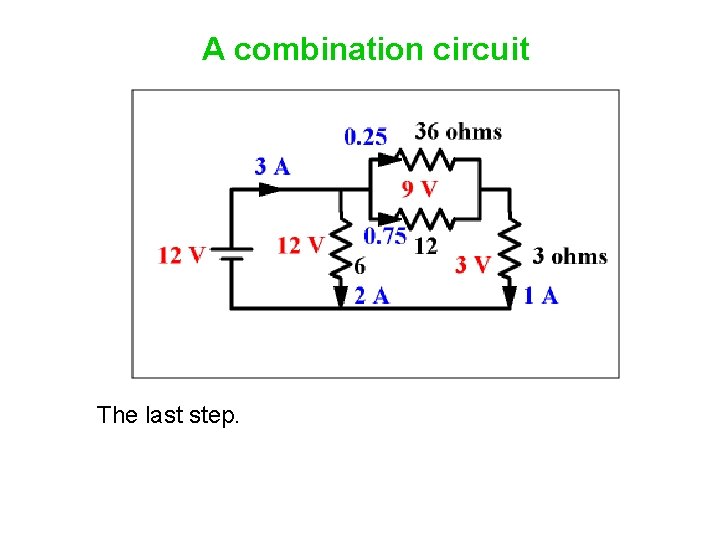
- Slides: 142

Four charges in a square Four charges of equal magnitude are placed at the corners of a square that measures L on each side. There are two positive charges +Q diagonally across from one another, and two negative charges -Q at the other two corners.

Four charges in a square Four charges of equal magnitude are placed at the corners of a square that measures L on each side. There are two positive charges +Q diagonally across from one another, and two negative charges -Q at the other two corners. How much potential energy is associated with this configuration of charges? 1. Zero 2. Some positive value 3. Some negative value

Four charges in a square 1. Determine how many ways you can pair up the charges. For each pair, write down the electric potential energy associated with the interaction. 2. We have four terms that look like: 3. And two terms that look like: 4. Add up all the terms to find the total potential energy. Do we get an overall positive, negative, or zero value?

Four charges in a square 1. Determine how many ways you can pair up the charges. For each pair, write down the electric potential energy associated with the interaction. 2. We have four terms that look like: 3. And two terms that look like: 4. Add up all the terms to find the total potential energy. Do we get an overall positive, negative, or zero value? Negative

Four charges in a square 2. The total potential energy is the work we do to assemble the configuration of charges. So, let’s bring them in (from infinity) one at a time. It takes no work to bring in the + charge 1. Bringing in - charge 2 takes negative work, because we have to hold it back since it's attracted to charge 1.

Four charges in a square 2. The total potential energy is the work we do to assemble the configuration of charges. Bringing in the + charge 3 takes very little work, since there's already one + charge and one – charge. The work done is also negative because it ends up closer to the negative charge. Bringing in the - fourth charge also takes negative work because there are two positive charges and one negative charge, so overall it's attracted to them. The total work done by us is negative, so the system has negative potential energy.

A charge and a dipole A dipole is placed on the x-axis with its center on the origin. A positive point charge will be moved from very far away on the y-axis to the origin. In Case 1, it will be moved straight down the y-axis. In Case 2, it will follow a complicated path but its starting and ending points will be the same as in case 1. Which case takes more work? Case 1 Case 2

A charge and a dipole Which case takes more work? 1. Case 1 2. Case 2 3. The work done is the same in both cases Case 1 Case 2

A charge and a dipole Like gravity, the electrostatic force is conservative. When the only forces acting are conservative, it doesn't matter how an object gets from A to B, the work done is always the same.

How much work? How much work is required to bring the charge from very far away to the center of the dipole? 1. Zero 2. The work done is positive 3. The work done is negative

How much work? The potential at the two end-points is the same, zero. The change in potential energy is: The work done by the field is -ΔU. We would have to do an amount of work + ΔU to bring in the charge against the field, but, because ΔU = 0, no work is done.

The point is special, not the charge Our conclusion, that no net work is done to move a charge (any charge) from far away to the place halfway between the two charges in the dipole, shows us that the point we are moving the charge to is special. Something about the combined influence of the two charges on that point is zero. What is zero for that point?

Electric potential Today, we focus on electric potential, which is related to potential energy in the same way electric field is related to force. Electric potential, like field, is a way to visualize how a charged object, or a set of charged objects, affects the region around it. A voltage is essentially a difference in electric potential, which changes how charges flow in a way analogous to how pressure differences affect the flow of fluid.

Visualizing electric potential We often draw equipotentials (lines of constant potential) on a picture involving charges and/or fields. An equipotential is analogous to contour lines on a map, such as this map of the summit of Mt. Rainier. What do the contour lines represent? Lines of constant _____. Photo credit: NASA/USGS Field lines are always perpendicular to equipotential lines.

Visualizing electric potential We often draw equipotentials (lines of constant potential) on a picture involving charges and/or fields. An equipotential is analogous to contour lines on a map, such as this map of the summit of Mt. Rainier. What do the contour lines represent? Lines of constant height. Photo credit: NASA/USGS Field lines are always perpendicular to equipotential lines.

Equipotentials in a uniform field Here’s a picture of equipotentials in a uniform electric field. In which direction is the electric field?

Equipotentials in a uniform field Here’s a picture of equipotentials in a uniform electric field. In which direction is the electric field? Down – field points in the direction of decreasing potential. Also, the units of J/C are equivalent to the volt (V).

Electric potential in a uniform field Potential difference, ΔV, is far more important than potential. In a uniform electric field: where q is the angle between the field and the displacement. When we just need the magnitude of the potential difference, we often simplify the above to , where d is the distance moved parallel to the field. The analogous gravitational situation is: Gravitational potential difference

Moving through the field A +q test charge is moved vertically a distance r in the region of uniform field. What is the change in potential experienced by this charge? 1. Zero 2. +kq / r 3. –kq / r 4. +12 volts 5. -12 volts End Start

Moving through the field The charge moves from the -4 V line to the +8 V line, for a net change in potential of +12 V. End Start

A negative charge? How would your answer change if the charge had been a negative charge, -q, instead? 1. The answer would not change 2. The answer would flip sign

A negative charge? It doesn’t matter what moves from the -4 V line to the +8 V line, the net change in potential is still +12 V. When you flip the sign of the charge, what does reverse sign is the change in potential energy.

Potential from a point charge The electric potential set up by a point charge is an example of potential when the field is non-uniform. Note that the potential is defined to be zero when r = infinity. Electric potential a distance r from a point charge : In which direction is the electric field in the picture?

Which way is the field? The simulation shows the equipotentials for a non-uniform field, specifically the field from a point charge. In which direction is the field? 1. Clockwise 2. Counter-clockwise 3. Toward the center 4. Away from the center 5. There is not enough information to say

Which way is the field? Field points in the direction of decreasing potential. In this case, that is toward the charge. You can also recognize that this pattern of equipotentials is produced by an object with a negative charge, and the electric field points toward a negative charge.

Worksheet: where is the potential zero? Two charges, +3 Q and –Q, are separated by 4 cm. Is there a point along the line passing through them (and a finite distance from the charges) where the net electric potential is zero? If so, where? First, think qualitatively. Is there such a point to the left of the +3 Q charge? Between the two charges? To the right of the –Q charge?

Worksheet: where is the potential zero? Unlike electric field, where we had to worry about two vectors being equal and opposite, we just have to worry about two numbers having the same magnitude but opposite sign…and they automatically have opposite signs. One charge has three times the magnitude of the other. Thus, we’re looking for points that are ____ times farther from the +3 Q charge than the –Q charge. In which region(s) can we find such points?

Worksheet: where is the potential zero? Unlike electric field, where we had to worry about two vectors being equal and opposite, we just have to worry about two numbers having the same magnitude but opposite sign…and they automatically have opposite signs. One charge has three times the magnitude of the other. Thus, we’re looking for points that are three times farther from the +3 Q charge than the –Q charge. (V = kq / r) In which region(s) can we find such points? Region II and Region III.

Worksheet: where is the potential zero? The two charges are separated by 4 cm. At what location between the charges is the net electric potential equal to zero? At what location to the right of the –Q charge is the net electric potential equal to zero?

Worksheet: where is the potential zero? The two charges are separated by 4 cm. At what location between the charges is the net electric potential equal to zero? 1 cm from the –Q charge, and 3 cm from the +3 Q charge. At what location to the right of the –Q charge is the net electric potential equal to zero? 2 cm from the –Q charge, and 6 cm from the +3 Q charge.

Off the line? On the straight line passing through the charges there is only one location (a finite distance from the charges) where the net electric field is zero. There are two places on the line where the net potential is zero. Are there are places that are not on the straight line joining the charges, a finite distance away, where the field and/or the potential is zero? 1. No 2. Yes for both. 3. Yes for field, No for potential. 4. No for field, Yes for potential.

Worksheet: where is the potential zero?

Making up questions Two charges, +3 Q and –Q, are separated by 4 cm. The charges are on the x-axis, with the +3 Q charge at x = -2 cm and the –Q charge at x = +2 cm. Ask a question involving force for this situation. How much force does the +3 Q charge feel? (There are very few questions like this. ) Ask a question involving field for this situation. What is the net electric field at the point x = +3 cm, y = +5 cm? (There an infinite number of questions like this!) Ask a question involving field, and then a follow-up question involving force. What is the net field at the origin? How much force does a +2 Q charge experience when placed at the origin?

Making up questions, II Two charges, +3 Q and –Q, are separated by 4 cm. The charges are on the x-axis, with the +3 Q charge at x = -2 cm and the –Q charge at x = +2 cm. Ask a question involving potential energy for this situation. Then re-phrase it without the words “potential” or “energy. ” Ask a question involving potential for this situation. Ask a question involving potential, and then a follow-up question involving potential energy.

Making up questions, II Two charges, +3 Q and –Q, are separated by 4 cm. The charges are on the x-axis, with the +3 Q charge at x = -2 cm and the –Q charge at x = +2 cm. Ask a question involving potential energy for this situation. Then re-phrase it without the words “potential” or “energy. ” What is the potential energy of this pair of charges? How much work was done to assemble this set of charges? Ask a question involving potential for this situation. What is the electric potential on the x-axis at x = +5 cm? (There an infinite number of questions like that. ) Ask a question involving potential, and then a follow-up question involving potential energy. What is the electric potential on the y-axis at y = +2 cm? What is the potential energy of a – 2 Q charge placed there?

Electric field near conductors, at equilibrium A conductor is in electrostatic equilibrium when there is no net flow of charge. Equilibrium is reached in a very short time after being exposed to an external field. At equilibrium, the charge and electric field follow these guidelines: • the electric field is zero within the solid part of the conductor • the electric field at the surface of the conductor is perpendicular to the surface • any excess charge lies only at the surface of the conductor • charge accumulates, and the field is strongest, on pointy parts of the conductor

Electric field near conductors, at equilibrium At equilibrium, the field is zero inside a conductor and perpendicular to the surface of the conductor because the electrons in the conductor move around until this happens. Excess charge, if the conductor has a net charge, can only be found at the surface. If any was in the bulk, there would be a net field inside the conductor, making electrons move. Usually, the excess charge is on the outer surface.

Electric field near conductors, at equilibrium Charge piles up (and the field is strongest) at pointy ends of a conductor to balance forces on the charges. On a sphere, a uniform charge distribution at the surface balances the forces, as in (a) below. For charges in a line, a uniform distribution (b) does not correspond to equilibrium. Start out with the charges equally spaced, and the forces the charges experience push them so that they accumulate at the ends (c).

A lightning rod A van de Graaff generator acts like a thundercloud. We will place a large metal sphere near the van de Graaff and see what kind of sparks (lightning) we get. We will then replace the large metal sphere by a pointy piece of metal. In which case do we get more impressive sparks (lightning bolts)? 1. with the large sphere 2. with the pointy object 3. neither, the sparks are the same in the two cases

A lightning rod The big sparks we get with the sphere are dangerous, and in real life could set your house on fire. With the lightning rod, the charge (and field) builds up so quickly that it drains charge out of the cloud slowly and continuously, avoiding the dangerous sparks. The lightning rod was invented by _____.

A lightning rod The big sparks we get with the sphere are dangerous, and in real life could set your house on fire. With the lightning rod, the charge (and field) builds up so quickly that it drains charge out of the cloud slowly and continuously, avoiding the dangerous sparks. The lightning rod was invented by Ben Franklin.

Capacitors A capacitor is a device for storing charge. The simplest type of capacitor is made up of two conductors separated by either empty space or by an insulating material known as the dielectric. For a capacitor storing charge Q, one conductor has a charge of +Q and the other has a charge of -Q. The amount of charge a capacitor can store for a given potential difference is given by its capacitance, C, which is determined by the capacitor geometry. The unit of capacitance is the farad (F). For a capacitor with a charge of +Q on one plate and -Q on the other: Q = C ΔV

Practical applications Do you know of any practical applications of capacitors?

Practical applications Do you know of any practical applications of capacitors? Capacitors are used anywhere charge needs to be stored temporarily, such as: • in computers, and in many circuits • storing the charge needed to light the flash in a camera • in timing applications, such as in pacemakers • in smoothing out non-constant electrical signals • as part of the circuits for metal detection systems, such as the ones you walk through in airports • in those no-battery flashlights and radios (some of these use a hand crank), where they act a little like batteries

A parallel-plate capacitor is a pair of identical conducting plates, each of area A, placed parallel to one another and separated by a distance d. With nothing between the plates, the capacitance is: is known as the permittivity of free space.

A parallel-plate capacitor Case 1: battery connected wire Capacitor voltage = battery voltage Case 2: battery disconnected battery switch Charge is constant

Playing with a capacitor Take a parallel-plate capacitor and connect it to a power supply. The power supply sets the potential difference between the plates of the capacitor. While the capacitor is still connected to the power supply, the distance between the plates is increased. When this occurs, what happens to C, Q, and ΔV? 1. C decreases, Q decreases, and ΔV stays the same 2. C decreases, Q increases, and ΔV increases 3. C decreases, Q stays the same, and ΔV increases 4. All three decrease 5. None of the above

Playing with a capacitor Does anything stay the same?

Playing with a capacitor Does anything stay the same? Because the capacitor is still connected to the power supply, the potential difference can't change. Moving the plates farther apart decreases the capacitance, because: To see what happens to the charge, look at Q = C ΔV. Decreasing C decreases the charge stored on the capacitor.

Playing with a capacitor, II Take a parallel-plate capacitor and connect it to a power supply. Then disconnect the capacitor from the power supply. After this, the distance between the plates is increased. When this occurs, what happens to C, Q, and ΔV? 1. C decreases, Q decreases, and ΔV stays the same 2. C decreases, Q increases, and ΔV increases 3. C decreases, Q stays the same, and ΔV increases 4. All three decrease 5. None of the above

Playing with a capacitor, II Does anything stay the same?

Playing with a capacitor, II Does anything stay the same? Because the charge is stranded on the capacitor plates, the charge cannot change. Moving the plates further apart decreases the capacitance, because: To see what happens to the potential difference, look at Q = C ΔV. Decreasing C while keeping the charge the same means that the potential difference increases. We can also get that from ΔV = Ed, with the field staying the same, because the field is produced by the charge.

Change? Our basic capacitor equations are: Q = C ΔV and, for a parallel-plate capacitor, The parallel-plate equation applies to a capacitor with vacuum (air is close enough) between the plates. Increase the area of each plate. The capacitance. . . 1. Increases 2. Decreases 3. Stays the same

Change? Capacitance is proportional to area, so increasing area increases capacitance.

How about this? Our basic capacitor equations are: Q = C ΔV and, for a parallel-plate capacitor, The parallel-plate equation applies to a capacitor with vacuum (air is close enough) between the plates. Double the charge on each plate. The capacitance. . . 1. Increases 2. Decreases 3. Stays the same

How about this? Based on Q = C ΔV, what happens to C when Q increases?

How about this? Based on Q = C ΔV, what happens to C when Q increases? Who knows, if we don’t know what happens to potential difference? Start here, instead: Increasing Q does not change the capacitance at all. If the capacitance is constant, because it is determined by what the capacitor looks like, Q = C ΔV tells us that the potential difference across the capacitor doubles when the charge on each plate doubles.

Energy in a capacitor When we move a single charge q through a potential difference ΔV, its potential energy changes by q ΔV. Charging a capacitor involves moving a large number of charges from one capacitor plate to another. If ΔV is the final potential difference on the capacitor, and Q is the magnitude of the final charge on each plate, the energy stored in the capacitor is: The factor of 1/2 is because, on average, the charges were moved through a potential difference of 1/2 ΔV. Using Q = C ΔV, the energy stored in a capacitor can be written as:

Discharging a capacitor Let’s try discharging a capacitor, after reading the label on the side: “WARNING: the energy stored in this capacitor is lethal. ” How much energy do you think is enough to kill you? 1000 J? A million joules? Let’s work out how much our 8 μF capacitor has when it has a potential difference of 4000 V. Then we’ll discharge it with a well-insulated screwdriver (don’t try this at home).

Discharging a capacitor “WARNING: the energy stored in this capacitor is lethal. ” Let’s work out how much our 8 μF capacitor has when it has a potential difference of 4000 V. Then we’ll discharge it with a well-insulated screwdriver (don’t try this at home). The factor of 10 -6 in the capacitance cancels the factor of 10002, so we get: That doesn’t sound like enough to kill you, but I would not want to discharge the capacitor with my hand!

Dielectrics When a material (generally an insulator) is inserted into a capacitor, we call the material a dielectric. Adding a dielectric allows the capacitor to store more charge for a given potential difference. When a dielectric is inserted into a charged capacitor, the dielectric is polarized by the field. The electric field from the dielectric will partially cancel the electric field from the charge on the capacitor plates. If the capacitor is connected to a battery at the time, the battery is able to store more charge on the capacitor, bringing the field back to its original value.

The dielectric constant Every material has a dielectric constant κ that tells you how effective the dielectric is at increasing the amount of charge stored. E 0 is the field without the dielectric. Enet is the field with the dielectric. For a parallel-plate capacitor containing a dielectric, the capacitance is: In general, adding a dielectric to a capacitor increases the capacitance by a factor of κ.

The dielectric constant of a conductor What is the dielectric constant of a conductor? 1. Zero 2. Infinity 3. This question makes no sense – a dielectric is an insulator, so a conductor does not have a dielectric constant.

The dielectric constant of a conductor What is the net electric field inside a conductor that is exposed to an external field?

The dielectric constant of a conductor What is the net electric field inside a conductor that is exposed to an external field? Enet is zero inside a conductor (in static equilibrium, at least) so the dielectric constant is infinite. An infinite dielectric constant implies an infinite capacitance, which implies an ability to store infinite charge. So, why don’t we fill the space between capacitor plates with conducting material?

The dielectric constant of a conductor What is the net electric field inside a conductor that is exposed to an external field? Enet is zero inside a conductor (in static equilibrium, at least) so the dielectric constant is infinite. An infinite dielectric constant implies an infinite capacitance, which implies an ability to store infinite charge. So, why don’t we fill the space between capacitor plates with conducting material? Because that would short out the capacitor – it would provide a conducting path for the electrons to move from the negative plate to the positive plate.

Playing with a dielectric A capacitor is charged by connecting it to a power supply. The connections to the power supply are removed, and then a piece of dielectric is inserted between the plates. Which of the following is true? 1. The charge on the plates increases, as does the potential difference. 2. The charge on the plates increases, while the potential difference stays constant. 3. The charge on the plates stays the same, while the potential difference increases. 4. The charge on the plates stays the same, while the potential difference decreases. 5. Neither the charge nor the potential difference changes.

Playing with a dielectric Does anything stay the same?

Playing with a dielectric Does anything stay the same? Because the charge is stranded on the capacitor plates, the charge cannot change. Adding the dielectric increases the capacitance by a factor of κ. To see what happens to the potential difference, look at Q = C ΔV. Increasing C while keeping the charge the same means that the potential difference decreases. We can also get that from ΔV = Ed, with the field being reduced by the presence of the dielectric.

Energy and dielectrics The energy stored in a capacitor is still given by: Consider a capacitor with nothing between the plates. The capacitor is charged by connecting it to a battery, but the connections to the battery are then removed. When a dielectric is added to the capacitor, what happens to the stored energy? 1. The energy increases 2. The energy decreases 3. Energy is conserved! The energy stays the same.

Energy and dielectrics With the battery connections removed, the charge on the capacitor is constant. Adding the dielectric then increases the capacitance. From the equation, we see that adding the dielectric decreases the energy. Where does it go? If you then pull the dielectric out of the capacitor, the energy in the capacitor goes back up again. Where did it come from?

Energy and dielectrics With the battery connections removed, the charge on the capacitor is constant. Adding the dielectric then increases the capacitance. From the equation, we see that adding the dielectric decreases the energy. Where does it go? If you then pull the dielectric out of the capacitor, the energy in the capacitor goes back up again. Where did it come from? The side of the dielectric that is closest to the positive capacitor plate is negatively charged; the side closest to the negative plate is positively charged – the dielectric is attracted to the capacitor. The capacitor does work pulling the dielectric in, and you do work pulling it back out.

A field inside a conductor We’re now starting a new part of the course, in which we look at circuits. Let’s start with a look at a microscopic model of how electrons move in a wire. Simulation Any wire is a conductor, and thus it has conduction electrons that move about randomly, much like gas molecules in an ideal gas. When a battery is connected to the wire, we get a non-zero field inside the conductor (this is a dynamic equilibrium situation) that imposes a small drift velocity on top of the random motion.

Electric current, I, is the rate at which charge flows. Note that positive charge flowing in one direction is equivalent to an equal amount of negative charge flowing in the opposite direction. In most cases electrons, which are negative, do the flowing, but current is defined to be in the direction of positive charge flow (this is Ben Franklin’s fault). In the previous simulation, the electric field set up by the battery causes a net flow of charge.

Doubling the current The simulation shows a sequence of positive charges +q flowing to the right with a speed v. Which of the following corresponds to a doubling of the current? 1. Twice as many charges going right at v 2. Same number of charges going right at 2 v 3. Add -q charges going right at v 4. Add -q charges going left at v 5. Both 1 and 2 6. 1, 2 and 3 7. 1, 2 and 4 8. 1 and 3 9. 1 and 4

Doubling the current Which corresponds to a doubling of the current? 1. Twice as many charges going right at v 2. Same number of charges going right at 2 v 3. Add -q charges going right at v 4. Add -q charges going left at v 5. Both 1 and 2 6. 1, 2 and 3 7. 1, 2 and 4 8. 1 and 3 9. 1 and 4

Flipping a switch When a light switch on a wall is turned on, how long (on average) does it take an electron in the wire right next to the switch to reach the filament in the light bulb? Is it almost instantaneous, or could it be a minute or even more? Simulation

Flipping a switch The drift velocities of electrons in wires are typically 1 mm/s or less. Since a wall switch is usually a meter or more from the light bulb, the time for an average electron to drift from the switch to the bulb can be a few minutes. On the other hand, the bulb comes on almost instantaneously. This is because the electric field travels at around 108 m/s, so it is set up in the conductor almost instantaneously. There are conduction electrons throughout the circuit that acquire a drift velocity from the field and make the bulb glow when they pass through the filament.

Least current In the electrical circuit shown, at what point is the current the least? 1. Nowhere - the current is the same everywhere 2. The current is least near the positive terminal of the battery 3. The current is least between the lightbulbs 4. The current is least after the second lightbulb 5. The current is least near the negative terminal of the battery

An analogy with fluids In a fluid system • water flows because a pump maintains a pressure difference • the current (how quickly the fluid flows) depends on both the pressure difference and on the overall resistance to flow in the set of pipes • energy can be extracted from the fluid to do work (e. g. , turn a water wheel)

An analogy with fluids In an electrical system • charge flows because a battery maintains a potential difference • the current (how quickly the charge flows) depends on both the potential difference and on the overall resistance to flow in the circuit • energy can be extracted from the charges to do work (e. g. , light a bulb)

How a battery works A battery is an entire electron manufacturing process. A chemical reaction frees up electrons at the negative electrode. These flow through the circuit to the positive electrode, where another chemical reaction recycles the electrons. The electrodes are used up in this process and waste products are produced. This is why batteries run out. In a rechargable battery, the chemical reactions are run in reverse to repair the electrodes. That can only be done so many times. Fuel cells are like batteries where raw materials are continually added, and waste products are constantly removed.

A lead-acid battery A lead acid battery consists of two electrodes, one made from lead and the other from lead dioxide, immersed in a solution of sulfuric acid. The chemical reaction that takes place at the lead electrode liberates electrons, so that's the negative terminal: The electrons travel through the circuit to the positive terminal, where they are recycled in the reaction: To maintain the reactions, H+ ions must flow from the negative terminal to the positive terminal.

Resistance and Ohm’s law Electric devices, such as toaster elements and light bulb filaments (and even wires, to a small extent), resist the flow of charge and are called resistors. The resistance of a resistor is the ratio of the potential difference across it to the current through it: Ohm’s Law: The unit for resistance is the ohm (W).

Resistance and Ohm’s law Example: In the circuit on the left, a 5 volt battery provides a current of 1 amp. What is the resistance of the resistor? What is the resistance of the resistor in the circuit on the right, where the same battery provides a 0. 5 amp current?

Electrical resistance Many materials (e. g. metals, salt solutions) have a constant resistance, and are said to be ohmic devices. In that case: The resistance, R, is a measure of how difficult it is for charges to flow. The resistance of an ohmic device (like a wire) depends on its length L, cross-sectional area A, and the resistivity r, a number that depends on the material:

Resistivity (r) values cover an incredibly wide range. Material Copper Silicon Hard rubber Teflon Resistivity

Temperature dependence Light bulbs are non-ohmic because their resistance is dependent on temperature. a is the temperature coefficient of resistivity

Electric power Light bulbs are stamped with two numbers, such as “ 100 W, 120 V”. The 100 W is 100 watts, the power dissipated by the bulb. In a standard incandescent bulb, the electrical energy is turned mainly into heat, not light, but the power is proportional to the brightness. Resistors, in general, turn electrical energy into heat. Our three equivalent equations for power are: Derived from:

Understanding your electric bill The electric company bills you for the amount of _____ you use each month. They measure this in units of ________. How much does 1 of these units cost?

Understanding your electric bill The electric company bills you for the amount of energy you use each month. They measure this in units of ________. How much does 1 of these units cost?

Understanding your electric bill The electric company bills you for the amount of energy you use each month. They measure this in units of kilowatt-hours (k. W h). How much does 1 of these units cost?

Understanding your electric bill The electric company bills you for the amount of energy you use each month. They measure this in units of kilowatt-hours (k. W h). How much does 1 of these units cost? Approximately 10 cents. How many joules is 1 k. W h?

Understanding your electric bill The electric company bills you for the amount of energy you use each month. They measure this in units of kilowatt-hours (k. W h). How much does 1 of these units cost? Approximately 10 cents. How many joules is 1 k. W h?

The cost of power Here’s how to find the total cost of operating something electrical: Cost = (Power rating in k. W) x (number of hours it's running) x (cost per k. W-h)

The cost of watching TV The average household in the U. S. has a television on for about 3 hours every day. About how much does this cost every day? 1. 1 cent 2. 10 cents 3. $1 4. $10

The cost of watching TV Looked up on a TV – power rating of 330 W = 0. 330 k. W Cost = (Power rating in k. W) x (number of hours it's running) x (cost per k. W-h) Cost = 0. 33 k. W x 3 h x 10 cents/(k. W h) = 10 cents (or so). Compare this to the $$$$ it costs to go to the movie theater.

Resistance of a light bulb Let's use the power equation to calculate the resistance of a 100 W light bulb. The bulb's power is 100 W when the potential difference is 120 V, so we can find the resistance from:

Resistance of a light bulb Let's use the power equation to calculate the resistance of a 100 W light bulb. The bulb's power is 100 W when the potential difference is 120 V, so we can find the resistance from: We can check this by measuring the resistance with a ohmmeter, when the bulb is hot.

Resistance of a light bulb Let's use the power equation to calculate the resistance of a 40 W light bulb. The bulb's power is 40 W when the potential difference is 120 V, so we can find the resistance from:

Resistors in series When resistors are in series they are arranged in a chain, so the current has only one path to take – the current is the same through each resistor. The sum of the potential differences across each resistor equals the total potential difference across the whole chain. The I’s are the same, and we can generalize to any number of resistors, so the equivalent resistance of resistors in series is:

Resistors in parallel When resistors are arranged in parallel, the current has multiple paths to take. The potential difference across each resistor is the same, and the currents add to equal the total current entering (and leaving) the parallel combination. The V’s are all the same, and we can generalize to any number of resistors, so the equivalent resistance of resistors in parallel is:

Light bulbs in parallel A 100 -W light bulb is connected in parallel with a 40 -W light bulb, and the parallel combination is connected to a standard electrical outlet. The 40 -W light bulb is then unscrewed from its socket. What happens to the 100 -W bulb? 1. It turns off 2. It gets brighter 3. It gets dimmer (but stays on) 4. Nothing at all – it stays the same

Light bulbs in series A 100 -W light bulb is connected in series with a 40 -W light bulb and a standard electrical outlet. Which bulb is brighter? 1. The 40 -watt bulb 2. The 100 -watt bulb 3. Neither, they are equally bright

Light bulbs in series The brightness is related to the power (not the power stamped on the bulb, the power actually being dissipated in the bulb). The current is the same through the bulbs, so consider: We already showed that the resistance of the 100 W bulb is 144 Ω at 120 volts. A similar calculation showed that the 40 W bulb has a resistance of 360 Ω at 120 volts. Neither bulb has 120 volts across it, but the key is that the resistance of the 40 W bulb is larger, so it dissipates more power and is brighter.

Light bulbs in series, II A 100 -W light bulb is connected in series with a 40 -W light bulb and a standard electrical outlet. The 100 -W light bulb is then unscrewed from its socket. What happens to the 40 -W bulb? 1. It turns off 2. It gets brighter 3. It gets dimmer (but stays on) 4. Nothing at all – it stays the same

Bulbs and switches Four identical light bulbs are arranged in a circuit. What is the minimum number of switches that must be closed for at least one light bulb to come on?

Bulbs and switches What is the minimum number of switches that must be closed for at least one light bulb to come on? 1. 1 2. 2 3. 3 4. 4 5. 0

Bulbs and switches Is bulb A on already?

Bulbs and switches Is bulb A on already? No. For there to be a current, there must be a complete path through the circuit from one battery terminal to the other.

Bulbs and switches To complete the circuit, we need to close switch D, and either switch B or switch C.

Bulbs and switches, II Which switches should be closed to maximize the brightness of bulb D? 1. All four switches. 2. Switch D and either switch B or switch C 3. Switch D and both switches B and C 4. Switch A, either switch B or switch C, and switch D 5. Only switch D.

Bulbs and switches, II What determines the brightness of a bulb?

Bulbs and switches, II What determines the brightness of a bulb? The power. For a bulb of fixed resistance, maximizing power dissipated in the bulb means maximizing the current through the bulb.

Bulbs and switches, II We need to close switch D, and either switch B or switch C, for bulb D to come on. Do the remaining switches matter?

Bulbs and switches, II We need to close switch D, and either switch B or switch C, for bulb D to come on. Do the remaining switches matter? Consider this. How much of the current that passes through the battery passes through bulb D?

Bulbs and switches, II We need to close switch D, and either switch B or switch C, for bulb D to come on. Do the remaining switches matter? Consider this. How much of the current that passes through the battery passes through bulb D? All of it.

Bulbs and switches, II If we open or close switches, does it change the total current in the circuit?

Bulbs and switches, II If we open or close switches, does it change the total current in the circuit? Absolutely, because it changes the total resistance (the equivalent resistance) of the circuit.

Bulbs and switches, II Does it matter whether just one of switches B and C are closed, compared to closing both of these switches?

Bulbs and switches, II Does it matter whether just one of switches B and C are closed, compared to closing both of these switches? Yes. Closing both switches B and C decreases the resistance of that part of the circuit, decreasing Req. That increases the current in the circuit, increasing the brightness of bulb D.

Bulbs and switches, II What about switch A?

Bulbs and switches, II What about switch A? An open switch is a path of ____ resistance. A closed switch is a path of ____ resistance.

Bulbs and switches, II What about switch A? An open switch is a path of infinite resistance. A closed switch is a path of zero resistance.

Bulbs and switches, II What about switch A? Closing switch A takes bulb A out of the circuit. That decreases the total resistance, increasing the current, making bulb D brighter. Close all 4 switches.

A combination circuit How do we analyze a circuit like this, to find the current through, and voltage across, each resistor? R 1 = 6 Ω R 2 = 36 Ω R 3 = 12 Ω R 4 = 3 Ω

A combination circuit First, replace two resistors that are in series or parallel by one equivalent resistor. Keep going until you have one resistor. Find the current in the circuit. Then, expand the circuit back again, finding the current and voltage at each step.

Combination circuit: rules of thumb Two resistors are in series when the same current that passes through one resistor goes on to pass through another. Two resistors are in parallel when they are directly connected together at one end, directly connected at the other, and the current splits, some passing through one resistor and some through the other, and then re-combines.

A combination circuit Where do we start? R 1 = 6 Ω R 2 = 36 Ω R 3 = 12 Ω R 4 = 3 Ω

A combination circuit Where do we start? R 1 = 6 Ω R 2 = 36 Ω R 3 = 12 Ω R 4 = 3 Ω Resistors 2 and 3 are in parallel.

A combination circuit

A combination circuit What next? R 1 = 6 Ω R 23 = 9 Ω R 4 = 3 Ω

A combination circuit What next? R 1 = 6 Ω R 23 = 9 Ω R 4 = 3 Ω Resistors 2 -3 and 4 are in series.

A combination circuit Now what? R 1 = 6 Ω R 234 = 12 Ω

A combination circuit Now what? These resistors are in parallel. R 1 = 6 Ω R 234 = 12 Ω

A combination circuit

A combination circuit Now, find the current in the circuit.

A combination circuit Now, find the current in the circuit.

A combination circuit Expand the circuit back, in reverse order.

A combination circuit When expanding an equivalent resistor back to a parallel pair, the voltage is the same, and the current splits. Apply Ohm’s Law to find the current through each resistor. Make sure the sum of the currents is the current in the equivalent resistor.

A combination circuit When expanding an equivalent resistor back to a series pair, the current is the same, and the voltage divides. Apply Ohm’s Law to find the voltage across each resistor. Make sure the sum of the voltages is the voltage across the equivalent resistor.

A combination circuit The last step.